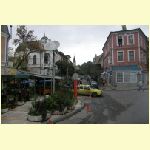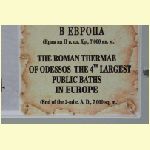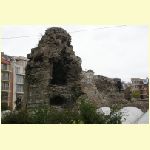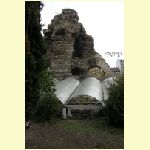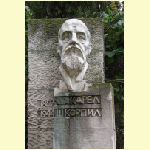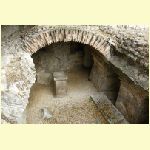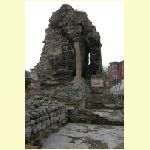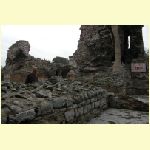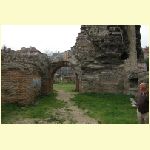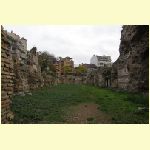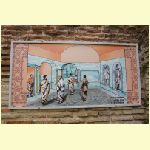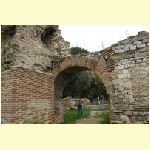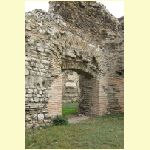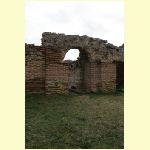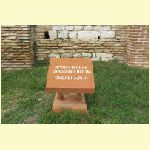After a short drive through the city, we came to The Roman Thermae of Odessos, The largest Public Baths in Europe.
They were built around the 2nd century AD and the remains of this complex show lots of the life of the times as well as
a Roman presence.
There were quite a few signs scattered about with illustrations of how the building would have looked.
This was very helpful as the remaining stonework was well preserved and so it made the whole complex easier to understand.
Some of the relics included column bases and pipework and the water piping and
sewage areas were quite fascinating. The stone itself appeared to be in good condition and it was easy to
negotiate the walkways that gave us excellent views of such a historical place.
Our next visit was to the Aladzha Monastery. This is a Medieval Rock Monastery, 13 - 14
century in age. Our first visit was to the visitor centre that had lots of pictures and statues
depicting life in earlier times and also an image of the labyrinth that existed for the monks to
get around the rockface.
We walked along a path that led to the rockface monastery and began to climb the many stairs to the
first level. This was so interesting as some of the small openings had remnants of altars and other relics.
At the top there was a bell that of course we had to ring to show we had made it to the top. The gardens and grounds here were beautifully kept and the whole place had an aura of peacefullness about it....
The next place to visit was the Ethnographic Museum, which was originally a local merchant's house
built in the 19th century. This extensive collection includes household implements, household goods and traditional costumes
from long ago. Its collection was very well organised and we enjoyed seeing the groups of statues that bring history to life.
One of the fascinating exhibits was the remains of a skeleton with many pieces of gold and jewellery placed in the coffin with him....
Some of the religious artwork was amazing, lots of gold and metal artifacts which were
well preserved. After sometime here we boarded our coach and on the way back to the Marco Polo saw old
ships along the shore. The port grounds were quite spectacular with many well tendered gardens placed along
the shoreline to enhance the docking area. Of course the bit of graffitti added a modern touch as well!
| | | | | |
